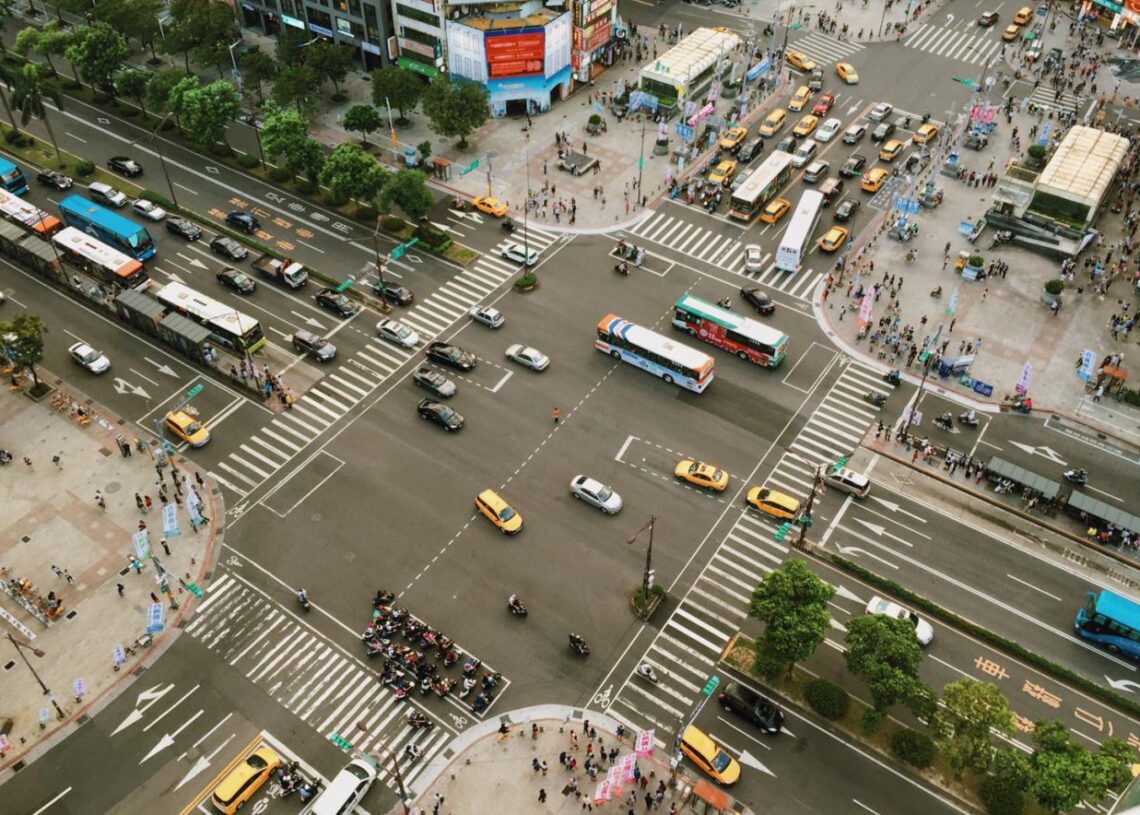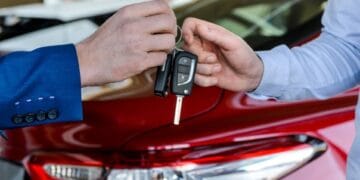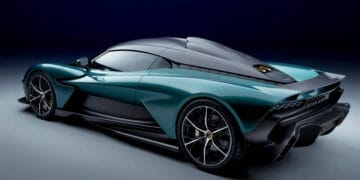The City’s Lifeline
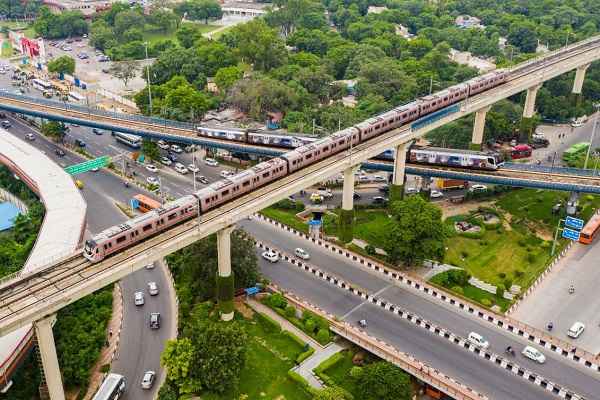
Urban transportation is the circulatory system of a city, enabling economic activity, connecting communities, and providing access to opportunities. When this system falters, the entire urban organism suffers. Traffic jams waste countless hours and billions in productivity, tailpipe emissions choke the air, and noise pollution erodes public health. The aspiration for urban transport solutions goes beyond merely alleviating these symptoms; it aims to fundamentally re-engineer the urban mobility experience. This involves moving from a car-centric approach to one that prioritizes people, efficiency, and environmental harmony.
The excitement surrounding these transformative solutions stems from their potential to unlock immense benefits. Imagine cities where commutes are faster and less stressful, where air quality is pristine, and where public spaces are reclaimed from parking lots for parks and pedestrian zones. For residents, this means more time, better health, and stronger community ties. For businesses, it translates to more efficient logistics and access to wider talent pools. For local governments, it provides the tools to meet ambitious sustainability goals and foster true urban resilience. This confluence of societal need, technological innovation, and strategic urban planning is propelling cities worldwide into a new era of intelligent and integrated mobility.
A. Pillars of Modern Urban Transport
Effective urban transport solutions are built upon several interconnected and synergistic pillars:
A. Public Transportation Enhancement:
A. High-Capacity Transit: Expanding and modernizing metro systems, light rail, and bus rapid transit (BRT) networks to move large volumes of people efficiently, reducing reliance on private vehicles.
B. Frequency and Reliability: Increasing service frequency and ensuring punctuality to make public transport a more attractive and dependable option than driving.
C. Last-Mile Connectivity: Integrating public transport with other modes (e.g., bike-sharing, micro-mobility, on-demand shuttles) to solve the “last-mile” problem and ensure seamless door-to-door journeys.
D. Digital Integration: Implementing real-time tracking, digital ticketing, and journey planning apps to enhance user experience and accessibility.
B. Active Mobility Promotion:
A. Dedicated Cycling Infrastructure: Investing in extensive, safe, and connected networks of bike lanes and paths to encourage cycling as a primary mode of transport.
B. Pedestrian-Friendly Zones: Creating and expanding pedestrian-only zones, wider sidewalks, and accessible routes to make walking a safer, more pleasant, and viable option for short distances.
C. Shared Micro-Mobility: Facilitating the widespread availability of electric scooters, e-bikes, and other personal electric vehicles through rental and sharing platforms for short urban trips.
D. Incentives and Education: Promoting the health and environmental benefits of active mobility through public campaigns and incentives.
C. Smart Mobility and Data Integration:
A. Mobility-as-a-Service (MaaS): Developing integrated digital platforms where users can plan, book, and pay for multimodal journeys (combining public transit, ride-sharing, car-sharing, micro-mobility) through a single app. This aims to offer an attractive alternative to private car ownership.
B. Real-Time Traffic Management: Utilizing sensors, cameras, and AI to monitor traffic flow, predict congestion, and dynamically adjust traffic signals to optimize vehicle movement.
C. Predictive Analytics: Using historical and real-time data to anticipate demand for various transport modes, allowing operators to dynamically allocate resources (e.g., add more buses or ride-share vehicles).
D. Shared Data Ecosystems: Creating secure platforms for data sharing between public transit operators, private mobility providers, and city planners to enable more efficient and integrated services.
D. Electrification of Fleets:
A. Electric Buses and Taxis: Transitioning public transport fleets and ride-sharing/taxi services to electric vehicles to reduce emissions and noise pollution in urban centers.
B. Commercial Delivery EVs: Encouraging the adoption of electric vans and trucks for last-mile delivery and urban logistics, often through incentives and urban low-emission zones.
C. Charging Infrastructure: Building a pervasive and accessible charging infrastructure for both public and private electric vehicle fleets across the city.
D. Hydrogen Fuel Cells: Exploring fuel cell electric vehicles (FCEVs) for heavy-duty vehicles and public transport where longer range and faster refueling are critical.
E. Innovative Transport Modalities:
A. Autonomous Shuttles: Deploying low-speed autonomous shuttles for fixed routes, especially in last-mile scenarios, university campuses, or business parks.
B. On-Demand Micro-Transit: Flexible, app-based shared van or minibus services that dynamically adjust routes based on rider requests, filling gaps where traditional public transport is less efficient.
C. Urban Air Mobility (eVTOLs): Long-term vision for electric Vertical Take-off and Landing (eVTOL) aircraft for inter-city or intra-city air taxi services, offering a third dimension for travel to bypass ground congestion. (While futuristic, initial limited services are being planned).
B. Impact on Urban Environments and Quality of Life
Implementing effective urban transport solutions has transformative effects on cities and their inhabitants:
A. Reduced Traffic Congestion:
A. Smoother Flow: Smart traffic management systems, V2X communication, and optimized public transport reduce bottlenecks and improve overall traffic flow.
B. Less Idle Time: Decreased time spent stuck in traffic, leading to reduced fuel consumption and lower emissions.
C. Increased Productivity: Less time commuting means more productive hours for individuals and businesses.
B. Improved Air Quality and Health:
A. Lower Emissions: Electrification of vehicles and reduced private car use directly lead to significant reductions in tailpipe emissions (CO2, NOx, PM2.5).
B. Fewer Respiratory Illnesses: Cleaner air contributes to better public health outcomes, reducing cases of asthma, heart disease, and other pollution-related illnesses.
C. Active Lifestyle: Promotion of walking and cycling encourages physical activity, leading to better cardiovascular health and overall well-being.
C. Enhanced Urban Livability:
A. Quieter Cities: Reduced noise from ICE vehicles contributes to a more peaceful urban environment, improving quality of life for residents.
B. Reclaiming Public Space: Less demand for parking allows cities to convert asphalt into green spaces, parks, public plazas, and dedicated pedestrian/cycling infrastructure, enhancing urban aesthetics and community interaction.
C. Safer Streets: Reduced vehicle speeds, fewer vehicles overall, and advanced safety features in new transport modes contribute to safer roads for all users.
D. Economic Benefits:
A. Cost Savings: Lower fuel and maintenance costs for individuals using public or shared transport, or for those owning EVs.
B. Increased Economic Activity: Efficient transportation networks facilitate commerce, tourism, and access to employment centers, boosting economic growth.
C. Investment Attractiveness: Cities with modern, efficient transport systems are more attractive to businesses and residents.
E. Greater Social Equity:
A. Accessible Mobility: Providing reliable and affordable transport options for all segments of the population, including those without access to a private vehicle (elderly, disabled, low-income).
B. Reduced Commute Burden: Shorter, more efficient commutes free up time and reduce financial strain for individuals, particularly those in lower-income brackets.
C. Challenges in Implementing Urban Transport Solutions
Despite the compelling benefits, the transition to smarter urban mobility faces significant hurdles:
A. Infrastructure Investment and Funding:
A. High Costs: Modernizing public transit, building charging networks, and developing smart road infrastructure requires massive capital investment.
B. Funding Models: Identifying sustainable and equitable funding models (e.g., public-private partnerships, congestion pricing, carbon taxes) is crucial.
C. “Last-Mile” Infrastructure: Ensuring sufficient infrastructure for micro-mobility (e.g., dedicated parking, charging docks) and last-mile delivery robots.
B. Policy and Regulatory Frameworks:
A. Inter-Agency Coordination: The need for seamless coordination between various city departments (transport, planning, environment) and across different levels of government (local, regional, national).
B. Data Governance and Privacy: Developing robust regulations for collecting, sharing, and protecting sensitive mobility data, balancing innovation with privacy concerns.
C. Permitting and Licensing: Streamlining processes for new mobility services (e.g., ride-sharing, AV pilots) to foster innovation while ensuring public safety.
D. Legacy Infrastructure: Adapting existing, often outdated, infrastructure designed for ICE vehicles to accommodate new transport modes.
C. Public Acceptance and Behavioral Change:
A. Shifting Mindsets: Overcoming deeply ingrained habits of private car ownership and encouraging adoption of public and shared mobility options.
B. Equity Concerns: Ensuring that new mobility solutions are accessible and affordable for all socio-economic groups, avoiding a “digital divide.”
C. Safety Concerns: Addressing public apprehension about autonomous vehicles, e-scooters on sidewalks, and other new forms of transport.
D. Communication and Education: Effectively communicating the benefits of new solutions to the public and addressing concerns through transparent engagement.
D. Technological Integration and Interoperability:
A. Standardization: Ensuring interoperability between different mobility platforms, payment systems, and vehicle types (e.g., charging standards).
B. Cybersecurity: Protecting interconnected transport systems from cyber threats and ensuring the resilience of smart infrastructure.
C. Data Overload: Managing and effectively utilizing the enormous volumes of data generated by connected vehicles and smart infrastructure.
E. Economic Viability of New Models:
A. Profitability: Ensuring that new shared and on-demand mobility services can achieve profitability while remaining affordable for consumers.
B. Competition: Managing competition between traditional transport providers and new tech-driven mobility services.
C. Job Displacement: Addressing potential job displacement in traditional transport sectors due to automation and new service models.
D. Global Examples of Progress
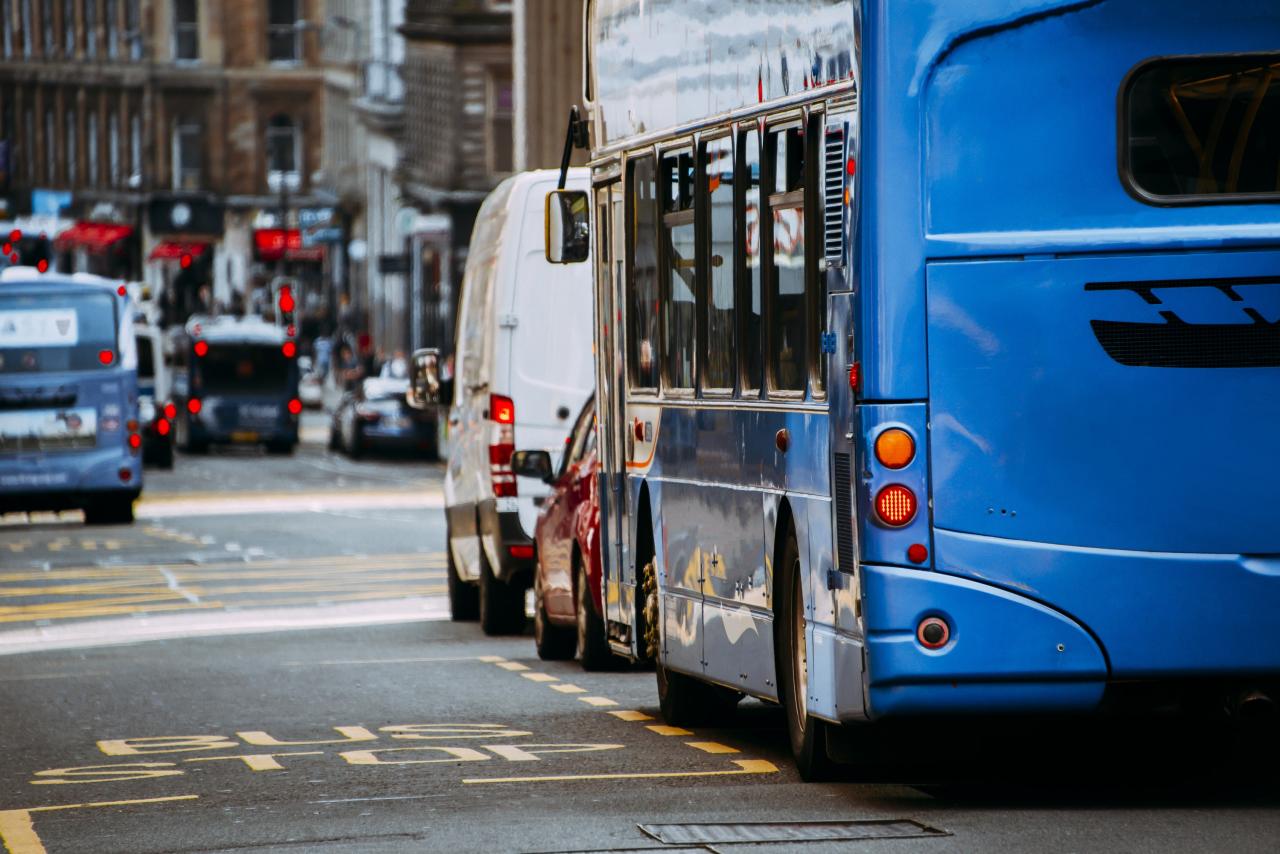
Cities around the world are pioneering innovative urban transport solutions:
A. Oslo, Norway: A global leader in electric vehicle adoption, with high EV sales penetration due to strong incentives, comprehensive charging infrastructure, and disincentives for ICE cars. It’s also focusing on pedestrian and cycling infrastructure.
B. Singapore: Investing heavily in MaaS, autonomous vehicle testing, and smart traffic management. Its land-use planning integrates transport and urban development seamlessly.
C. Amsterdam, Netherlands: Renowned for its extensive cycling infrastructure, bike-sharing programs, and pedestrian-friendly urban design, making cycling a primary mode of transport.
D. Curitiba, Brazil: A pioneer in Bus Rapid Transit (BRT) systems, demonstrating how high-quality public transport can be a backbone of urban mobility even in developing countries.
E. Helsinki, Finland: A frontrunner in MaaS development, integrating various transport options into a single digital platform to reduce private car ownership.
F. Songdo, South Korea: A purpose-built “smart city” designed with integrated public transport, dedicated bike lanes, and an emphasis on walkability and green spaces from its inception.
E. The Role of Governance and Collaboration
Successful implementation of urban transport solutions hinges on strong governance and collaborative efforts:
A. Visionary Leadership: City leaders and urban planners need to articulate a clear, long-term vision for sustainable urban mobility.
B. Integrated Planning: Moving away from siloed planning (e.g., separate departments for roads, public transport, environment) towards integrated urban and transport planning.
C. Public-Private Partnerships: Fostering collaboration between city governments, public transport operators, private technology companies, and start-ups to develop and deploy innovative solutions.
D. Community Engagement: Involving citizens, businesses, and local communities in the planning process to ensure solutions meet their needs and gain public acceptance.
E. Data-Driven Decision Making: Relying on robust data analytics to understand mobility patterns, identify pain points, and evaluate the effectiveness of interventions.
F. Flexible Policy Frameworks: Creating agile regulatory environments that can adapt to rapidly evolving technologies and business models.
F. The Future Vision
The ultimate vision for urban transport solutions is a city where mobility is:
A. Seamless and Integrated: All modes of transport, public and private, are interconnected and accessible through intuitive digital platforms, allowing for effortless journey planning and execution.
B. Clean and Green: Predominantly powered by renewable energy, with zero-emission vehicles dominating the streets, resulting in pristine air quality and reduced noise pollution.
C. Safe and Reliable: Autonomous technologies significantly reduce accidents, and transport systems are dependable and predictable, minimizing delays and disruptions.
D. Equitable and Accessible: Transportation is affordable and available to all residents, regardless of income, age, or physical ability, ensuring full participation in urban life.
E. Efficient and Optimized: Intelligent traffic management and dynamic routing minimize congestion, making the most of existing infrastructure.
F. People-Centric: Urban spaces are designed around people, with vibrant pedestrian zones, extensive green spaces, and a focus on active mobility, enhancing overall quality of life and community well-being.
Conclusion
The challenge of urban transport in a rapidly urbanizing world is immense, but the solutions are emerging with incredible speed and innovation. By strategically embracing electrification, autonomous technology, advanced connectivity, and integrated shared mobility services, cities can fundamentally redefine their relationship with transportation. The journey requires significant investment, bold policy decisions, and a willingness to embrace change, but the rewards are profound: cleaner air, less congestion, greater accessibility, and a higher quality of life for billions of urban dwellers.
As cities continue to grow, the ability to move people and goods efficiently and sustainably will be a defining characteristic of their success. The future of urban mobility is not just about getting from point A to point B; it’s about building smarter, more resilient, and ultimately, more human-centric cities where every journey contributes to a thriving urban ecosystem. The path ahead is clear, and the world’s metropolises are actively paving the way towards a truly transformative and sustainable urban future.

